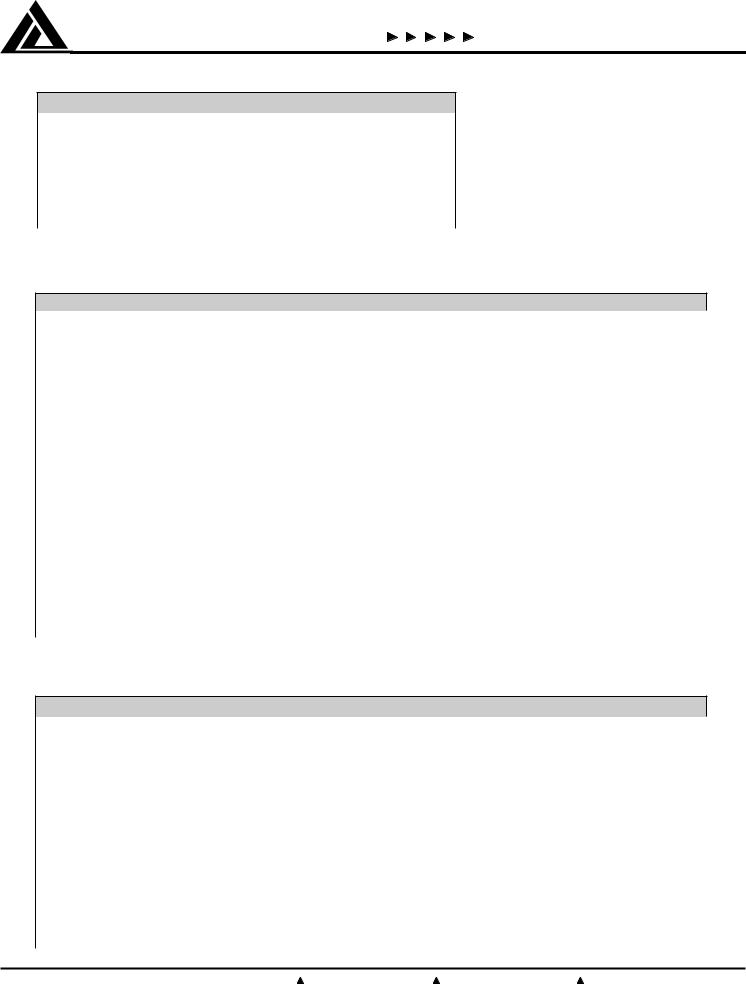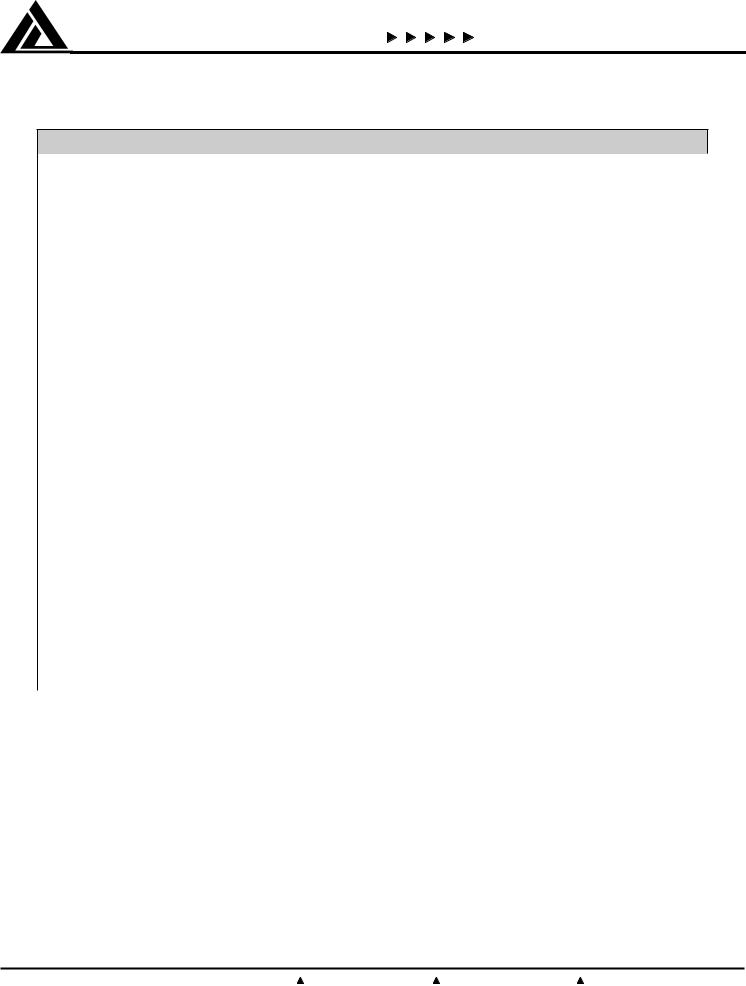California Micro Devices CM88L70CPEI, CM88L70CPE, CM88L70CP, CM88L70PEI, CM88L70PE Datasheet
...
CALIFORNIA MICRO DEVICES |
CM88L70/70C |
CMOS INTEGRATED DTMF RECEIVER, 3 VOLT VERSION
Features |
Applications |
||
• 2.7 to 3.6 volt operating range |
• |
PCMCIA |
|
• |
Full DTMF receiver |
• |
Portable TAD |
• Less than 18mW power consumption |
• |
Mobile radio |
|
• |
Industrial temperature range |
• |
Remote control |
• Uses quartz crystal or ceramic resonators |
• |
Remote data entry |
|
• Adjustable acquisition and release times |
• |
Call limiting |
|
• 18-pin DIP, 20-pin QSOP, 18-pin SOIC, |
• |
Telephone answering systems |
|
|
20-pin PLCC, 20-pin TSSOP |
• |
Paging systems |
• |
CM88L70 |
|
|
|
- Power down mode |
|
|
|
- Inhibit mode |
|
|
- Buffered oscillator output (OSC 3) to drive other devices
Product Description
The CAMD CM88L70/70C provides full DTMF receiver capability by integrating both the bandsplit filter and digital decoder functions into a single 18-pin DIP, SOIC, or 20-pin PLCC, TSSOP, or QSOP package. The CM88L70/70C is manufactured using state-of-the-art CMOS process technology for low power consumption (35mW, max.) and precise data handling. The filter section uses a switched capacitor technique for both high and low group filters and dial tone rejection. The CM88L70/70C decoder uses digital counting techniques for the detection and decoding of all 16 DTMF tone pairs into a 4-bit code. This DTMF receiver minimizes external component count by providing an on-chip differential input amplifier, clock generator, and a latched three-state interface bus. The on-chip clock generator requires only a low cost TV crystal or ceramic resonator as an external component.
Block Diagram
© 2000 California Micro Devices Corp. All rights reserved. |
C0451098 |
6/16/2000 215 Topaz Street, Milpitas, California 95035 |
Tel: (408) 263-3214 |
Fax: (408) 263-7846 |
www.calmicro.com |
1 |

CALIFORNIA MICRO DEVICES |
CM88L70/70C |
Absolute Maximum Ratings: (Note 1)
ABSOLUTE MAXIMUM RATINGS
Parameter |
|
Symbol |
Value |
|
|
|
|
Power Supply Voltage |
(VDD- |
VDD |
6.0V Max |
VSS) |
|
||
|
|
|
|
Voltage on any Pin |
|
Vt |
VSS-0.3V to VDD+0.3V |
Current on any Pin |
|
It |
10mA Max |
Storage Temperature |
|
TS |
-65°C to +150°C |
This device contains input protection against damage due to high static voltages or electric fields; however, precautions should be taken to avoid application of voltages higher than the maximum rating.
Note:
1.Exceeding these ratings may cause permanent damage, functional operation under these conditions is not implied.
DC Characteristics: All voltages referenced to VSS, VDD = 3.0V + 20% / -10%, TA = -40°C to +85°C unless otherwise noted.
DC CHARACTERISTICS
Parameter |
|
Symbol |
Min |
Typ |
Max |
Units |
Test Conditions |
|
|
|
|
|
|
|
|
|
|
Operating Supply Voltage |
|
V DD |
2.7 |
3.0 |
3.6 |
V |
V |
|
Operating Supply Current |
|
IDD |
|
3.0 |
5.0 |
mA |
|
|
Standby Supply Current |
|
IDDS |
|
5.0 |
10 |
µA |
PD=VDD |
|
Low Level Input Voltage |
|
V IL |
|
|
1.0 |
V |
VDD=3.0V |
|
High Level Input Voltage |
|
V IH |
2.0 |
|
|
V |
VDD=3.0V |
|
Input Leakage Current |
|
IIH/LIL |
|
0.1 |
|
µA |
VIN = VSS or VDD (Note 11) |
|
Pull Up (Source) Current on TOE |
Iso |
-12 |
-2.0 |
|
µA |
TOE = 0V |
||
Pull down (sink) Current PD |
IPD |
|
1.0 |
45 |
µA |
PD = 3.0V |
||
Pull down (sink) Current INH |
IINH |
|
1.0 |
45 |
µA |
IHN = 3.0V |
||
Input Impedance, (IN+, IN-) |
R IN |
|
10 |
|
MΩ |
@ 1KHz |
||
Steering Threshold Voltage |
V Tst |
|
1.5 |
|
V |
|
||
Low Level Output Voltage |
|
V OL |
|
0.1 |
0.4 |
V |
IOL = 1.0mA |
|
High Level Output Voltage |
|
V OH |
2.4 |
2.6 |
|
V |
IOH = 400µA |
|
Output High (Source) Current |
IOH |
1.0 |
|
|
mA |
VOUT = 2.5V @ VDD = 2.7V |
||
Output Voltage |
|
VREF |
V REF |
|
1.5 |
|
V |
No Load |
Output Resistance |
|
R OR |
|
10 |
|
ΚΩ |
|
|
|
|
|
|
|
||||
Operating Characteristics: All voltages referenced to VSS, VDD = 3.0V + 20% / -10%, TA = -40°C to +85°C unless otherwise noted.
Gain Setting Amplifier
OPERATING CHARACTERISTICS
Parameter |
Symbol |
Min |
Typ |
Max |
Units |
Test Conditions |
|
|
|
|
|
|
|
Input Leakage Current |
IIN |
|
100 |
|
nA |
VSS < VIN < VDD |
Input Resistance |
R IN |
|
10 |
|
MΩ |
|
Input Offset Voltage |
V OS |
|
15 |
25 |
mV |
|
Power Supply Rejection |
PSR R |
50 |
60 |
|
dB |
1KHz (Note 12) |
|
|
|
|
|
|
|
Common Mode Rejection |
CMR R |
40 |
60 |
|
dB |
-3.0V < VIN < 3.0V |
DC Open Loop Voltage Gain |
AVOL |
32 |
65 |
|
dB |
|
Open Loop Unity Gain Bandwidth |
fc |
0.3 |
1.0 |
|
MH z |
|
|
|
|
|
|
|
|
Output Voltage Swing |
V O |
|
2.2 |
|
V P-P |
RL ≥ 100KΩ to VSS |
Tolerable Capacitive Load (GS) |
CL |
|
|
100 |
pF |
|
Tolerable Resistive Load (GS) |
R L |
|
|
|
KΩ |
|
Common Mode Range (No Load) |
V cm |
5.0 |
1.5 |
|
V P-P |
No Load |
©2000 California Micro Devices Corp. All rights reserved.
2 |
215 Topaz Street, Milpitas, California 95035 |
Tel: (408) 263-3214 |
Fax: (408) 263-7846 |
www.calmicro.com 8/16/2000 |

CALIFORNIA MICRO DEVICES |
CM88L70/70C |
AC Characteristics: All voltages referenced to VSS, VDD=3.0V + 20% / -10%, TA=-40°C to +85°C, fCLK=3.579545 MHz using test circuit (Fig. 1) unless otherwise noted.
AC CHARACTERISTICS
Parameter |
|
|
Symbol |
Min |
Typ |
Max |
Units |
Notes |
|
|
|
|
|
|
|
|
|
Valid Input Signal Levels |
|
|
|
-36 |
|
-6.4 |
dBm |
1,2,3,4,5,8 |
(each tone of composite signal) |
|
12.3 |
|
370 |
mVRMS |
|||
|
|
|
||||||
|
|
|
|
|
|
|||
Positive Twist Accept |
|
|
|
|
|
6 |
dB |
|
|
|
|
|
|
|
|
|
|
Negative Twist Accept |
|
|
|
|
|
6 |
dB |
|
|
|
|
|
|
|
|
|
|
Freq. Deviation Accept Limit |
|
|
|
1.5%±2Hz |
Nom. |
2,3,5,8,10 |
||
|
|
|
|
|
|
|
|
|
Freq. Deviation Reject Limit |
|
±3.5% |
|
|
Nom. |
2,3,5 |
||
|
|
|
|
|
|
|
|
|
Third Tone Tolerance |
|
|
|
|
-16 |
|
dB |
2,3,4,5,8,9,13,14 |
|
|
|
|
|
|
|
|
|
Noise Tolerance |
|
|
|
|
-12 |
|
dB |
2,3,4,5,6,8,9 |
|
|
|
|
|
|
|
|
|
Dial Tone Tolerance |
|
|
|
|
+22 |
|
dB |
2,3,4,5,7,8,9 |
|
|
|
|
|
|
|
|
|
Tone Present Detection Time |
tDP |
5 |
8 |
14 |
mS |
Refer to |
||
Tone Absent Detection Time |
tDA |
0.5 |
3 |
8.5 |
mS |
Timing Diagram |
||
Min Tone Duration Accept |
tREC |
|
|
40 |
mS |
(User Adjustable) |
||
Max Tone Duration Reject |
|
|
tREC |
20 |
|
|
mS |
|
|
|
|
|
Times shown are |
||||
Min. Interdigit Pause Accept |
tID |
|
|
40 |
mS |
obtained with |
||
|
|
circuit in Fig. 1) |
||||||
Max. Interdigit Pause Reject |
tDO |
20 |
|
|
µS |
|||
|
|
|
||||||
Propagation Delay (St to Q) |
tPQ |
|
13 |
|
µS |
|
||
Propagation Delay (St to |
StD) |
tPStD |
|
8 |
|
µS |
TOE = VDD |
|
Output Data Set Up (Q to StD) |
tQStD |
|
3.4 |
|
µS |
|
||
Propagation Delay (TOE to Q) |
Enable |
tPTE |
|
200 |
|
nS |
RL = 10KΩ |
|
|
|
|
|
|
|
|||
|
|
Disable |
tPTD |
|
500 |
|
nS |
CL = 50pF |
Crystal/Clock Frequency |
|
|
fCLK |
3.5759 |
3.5795 |
3.5831 |
MHz |
|
Clock Output (OSC 2) |
|
Capacitive |
CLO |
|
|
30 |
pF |
|
|
|
Load |
|
|
|
|||
Notes:
1.dBm = decibels above or below a reference power of 1 mW into a 600 ohm load.
2.Digit sequence consists of all 16 DTMF tones.
3.Tone duration = 40mS. Tone pause = 40 mS.
4.Nominal DTMF frequencies are used.
5.Both tones in the composite signal have an equal amplitude.
6.Bandwidth limited (0 to 3 KHz) Gaussian Noise.
7.The precise dial tone frequencies are (350 Hz and 440 Hz) ±2%.
8.For an error rate of better than 1 in 10,000
9.Referenced to lowest level frequency component in DTMF signal.
10.Minimum signal acceptance level is measured with specified maximum frequency deviation.
11.Input pins defined as IN+, IN-, and TOE.
12.External voltage source used to bias VREF.
13.This parameter also applies to a third tone injected onto the power supply.
14.Referenced to Figure 1. Input DTMF tone level at -28 dBm.
© 2000 California Micro Devices Corp. All rights reserved.
6/16/2000 215 Topaz Street, Milpitas, California 95035 |
Tel: (408) 263-3214 |
Fax: (408) 263-7846 |
www.calmicro.com |
3 |
